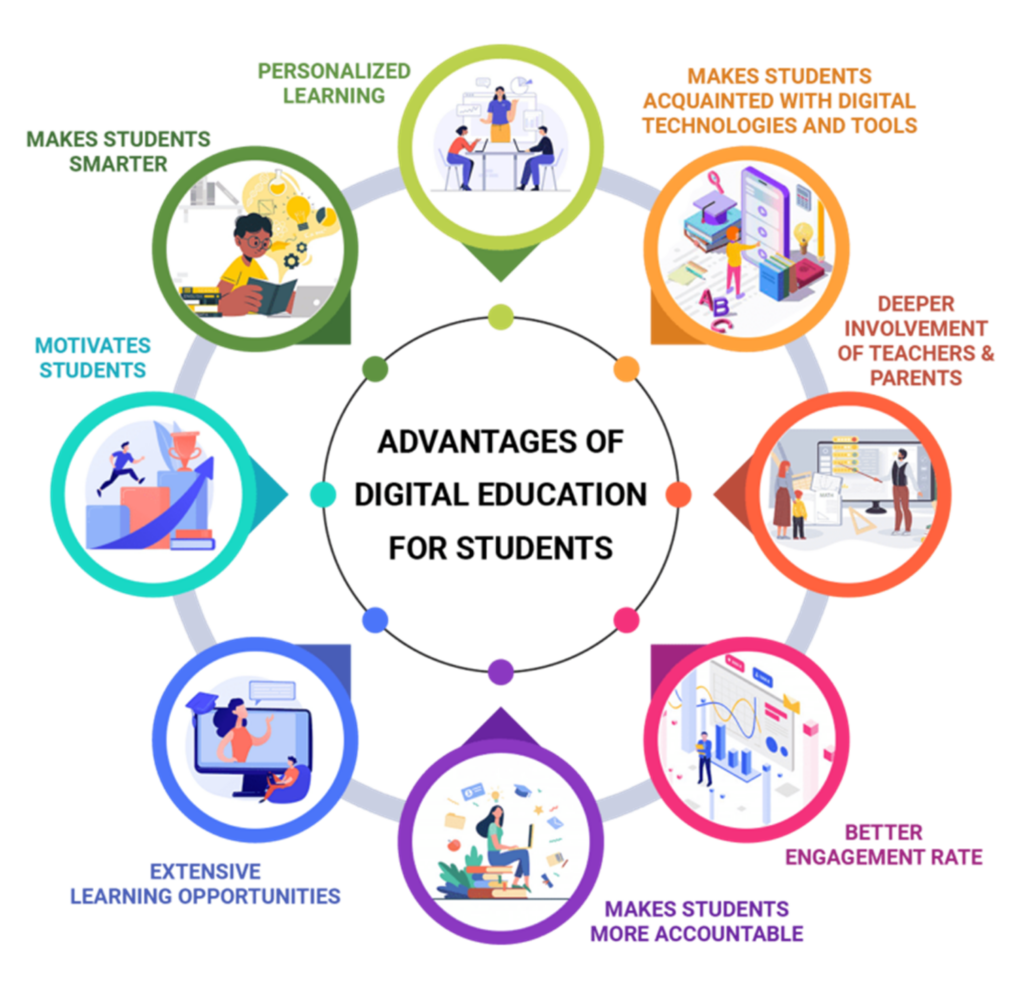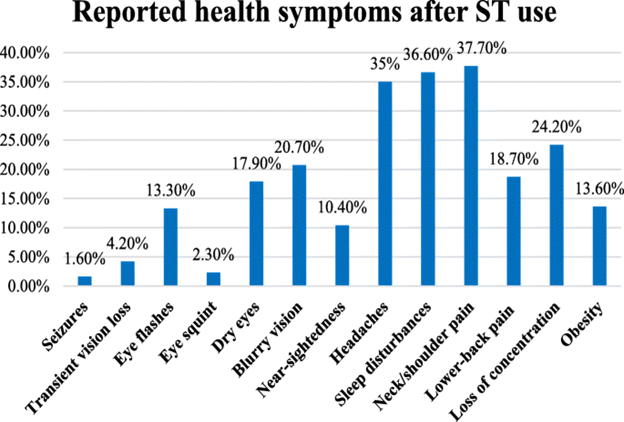the world is online
Digital Age
The digital age also known as The Information Age, Computer Age, New Media Internet Age, or the Digital Revolution is the present era that began in the mid-20th century to the early 21st century. It is characterized by a rapid shift from traditional industries to information technology where everything is entirely dependent on the internet and virtual media. Digital Culture is another term that is used to describe the influence of digital media and technology on people’s lives, society, and work. Moreover, it is now a piece of cake to transfer information to everyone encompassing online courses, books, and training through digital culture (Digital Sociology, n.d.).
How people benefit from the Digital Age
Easy access to knowledge and work
One of the internet's many important contributions to education is its unique way of accessing knowledge. Gone are the days when students could only study wisdom in their classrooms or libraries. Scholarly articles, eBooks, and online courses have made it possible for students to learn more about a wide range of subjects and explore their interests outside of the traditional curriculum (Miller,2023). Apart from knowledge, it also attracts young individuals who are always looking out for 9 to 5 jobs and companies that permit them to work from home. A person can work in remote areas by sitting in their cozy cocoons on the internet as the different digital media platforms allow them to do their work swiftly and efficiently (Digital Sociology, n.d.).
Asset during the COVID-19 pandemic
It was the time in 2020 when all the schools were shut due to a rise in cases of coronavirus. At that time, the internet proved to be a boon for students as they were able to continue their studies. Education technology was rapidly advancing and becoming more widely used even before COVID-19. Global tech investments reached US$18.66 billion in 2019, and the market for online education is expected to reach $350 billion by 2025. Since COVID-19, there has been a noticeable increase in the use of online learning software, virtual tutoring, video conferencing tools, and language apps (World Economic Forum, Apr 29, 2020).
Customized Education
Education is now more personalized and flexible to accommodate various learning preferences thanks to the internet. Online learning environments, adaptive technologies, and data analytics are used to tailor learning experiences for students based on their strengths, weaknesses, and preferred learning styles. With this individualized approach, students can study on their own, go deeper into topics they are interested in, and obtain specific help. Another benefit of online learning is flexibility. Students can access course materials at any time and from any location, which fits perfectly with a variety of schedules and learning styles (Miller,2023).
Global-View and Cross-Cultural Communication
Students and academic institutions throughout the world have been able to collaborate, communicate, and share knowledge ever since the internet was created. Students can converse across cultural boundaries, gain knowledge of many practices and beliefs, and cultivate a broader understanding of global issues, all made possible by the internet. By promoting a global perspective and preparing students for success in a diverse and interconnected global society, the internet plays a critical role in transforming education (Miller,2023).
Benefits of the Digital Age

Challenges and issues of concern
Deteriorating physical health
In this contemporary era, students spend excessive time on social media and this screen time often leads to a sedentary lifestyle, contributing to various physical health issues among college students. Prolonged sitting and decreased physical activity associated with excessive screen use can lead to weight gain, musculoskeletal problems, and an increased risk of developing chronic conditions like obesity and cardiovascular diseases (Murtagh,2023).
Mental health issue:
Heavy screen time usage can contribute to mental health challenges among students. Depression is becoming more and more of a problem, especially in today's generation, and is primarily caused by social media. People who are unaware of how to use social media efficiently risk falling into a vicious cycle of envy, self-doubt, and low self-esteem. It's common knowledge that signs of sleep disturbances precede depressive symptoms and thoughts of suicide which is mainly due to excessive use of mobile phones (Nakshine, et al., 2022).
Diminishes Academic Performance
Students' academic performance may suffer because of excessive screen time. Overindulging in screen time—whether on laptops, tablets, or smartphones—can result in diminished concentration, lower output, and trouble remembering things. Continuous distractions from social media, online gaming, or streaming services can impair focus and study skills, which will ultimately have an impact on academic performance and grades (Murtagh, 2023).
Excessive Use of Smart Technology (ST) Devices and health-related complaints
The symptoms that the students had reported following their use of ST devices were questioned, as was the possibility that these problems had been diagnosed before device use. The most frequently reported symptoms following usage were headaches (35.0%), sleep problems (36.6%), and neck/shoulder pain (37.7%) (Fig. 1). Some of the other conditions that were mentioned were obesity, lower back pain, nearsightedness, dry eyes, squinting, seizures, and momentary vision loss. 10.1% of patients had previously been diagnosed with migraines, 0.4% with epilepsy, 17.9% with dry eyes, 3.3% with nearsightedness, 6.3% with blurred vision, and 6.5% with obesity before using ST (Buabbas, B.A. et al, 2020).



Implementation of the digital age in classrooms
In a group discussion, we discussed a hot topic based on the digital age, “As a new middle school teacher, what would be your classroom policy for the use of digital devices”?
After reviewing the pros and cons of digital devices, our team decided not to allow digital devices to middle school students. Instead of using individual devices, I decided to focus on creating a digital classroom that can provide a myriad of benefits to students and teachers as well
A point against the usage of digital devices during class
The first and foremost reason why students are not allowed to use digital devices during class as it leads to distraction. Moreover, cell phones or laptops are equipped with the internet, and students can cheat, share answers, or use any social media application in the classroom
Smart classrooms strategy
Learning can be more effective and interesting when education is promoted by the amazing use of technology in the form of digital classrooms. Here are some appealing advantages of digital classrooms:
Students’ Engagement
Students’ curiosity is sure to be aroused when technology is included in regular lessons. It adds enjoyment and enthusiasm to learning. The same syllabus can be taught by teachers in a variety of methods. Smart classrooms can be more effective and engaging by integrating audio, video, animations, images, and other forms of multimedia, that aim to facilitate a deeper understanding of the content (Extra Marks, 2024).
Increases Retention of Knowledge
Students become interested in lessons that include technology. They learn more effectively and take pleasure in the subjects that are being taught thanks to improved teaching strategies. They can therefore remember the information for a longer period when they comprehend it better. This method also allows teachers to test several approaches and determine what best suits their pupils’ needs in terms of learning (Extra Marks, 2024).
Conclusion
Due to its ability to personalize learning experiences and provide access to knowledge, the digital era has completely changed education. Apart from its advantages, problems such as pupils’ declining physical and mental health emphasize the necessity of integrating technology with caution. Classroom regulations that prioritize interactive smart classrooms to improve learning must strike a balance between maximizing distractions and promoting involvement. Effective use of technology by educators can promote global communication, better knowledge, and individualized learning, setting up pupils for success in a changing, interconnected world. When used intelligently, the digital revolution has the power to drastically improve education.




